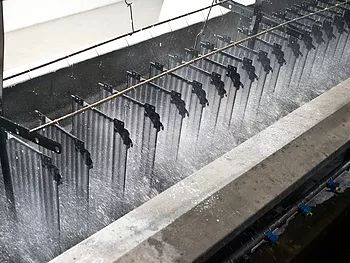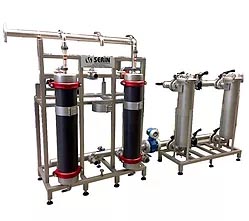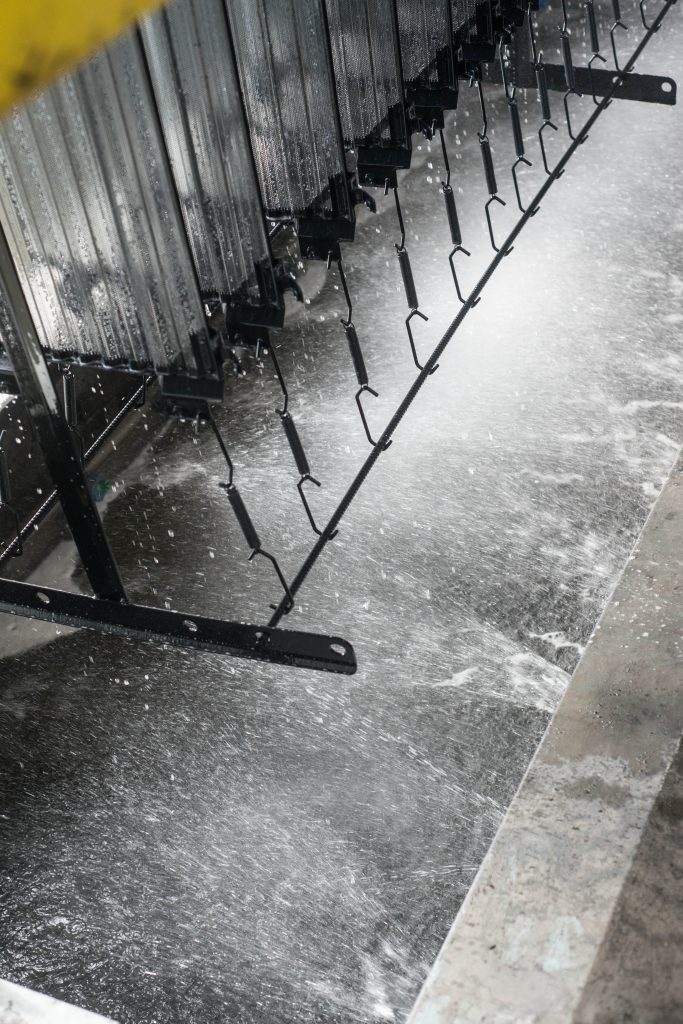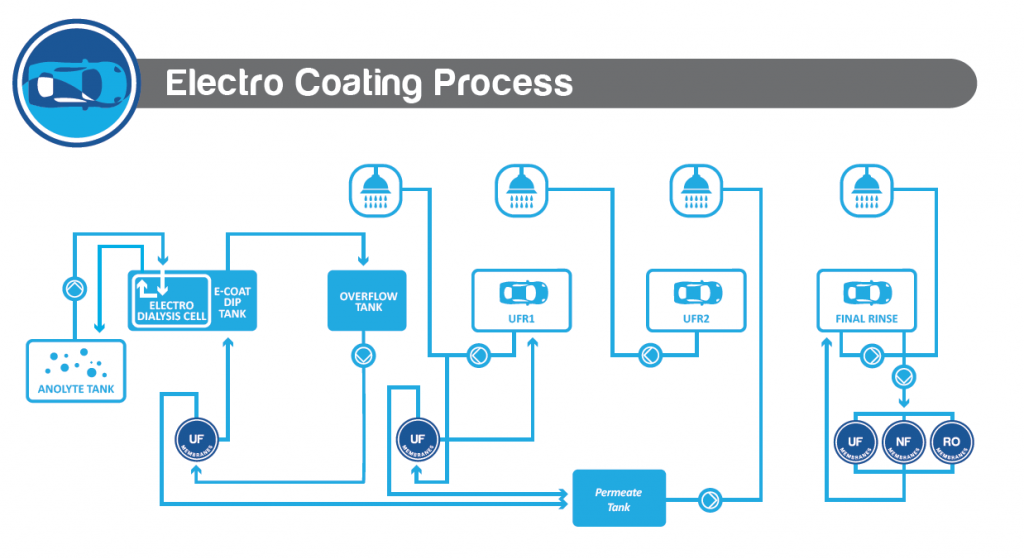Ultrafiltration is a pressure-driven membrane process capable of separating soluble components on the basis of molecular size and shape. Under an applied pressure difference across an ultrafiltration membrane, solvent and small solute species pass through the membrane and are collected (permeate) while larger solute species are retained by the membrane and recovered as a concentrated Retentate. In Electrocoat paint systems, the ultrafiltration permeate contains water and paint solubilizers. The Permeate is used in the paint line rinse section. This recycling method provides a closed loop rinse system for recovering paint solids (drag-out). The Permeate can also be diverted to drain to reduce conductivity of the paint. The filtrate capacity refers to the membrane cartridge surface area at a certain paint recirculation capacity and is known as the “specific filtrate capacity”. It depends on the type of paint used and must be determined from case to case by way of measurement.
Nanofiltration — Final Rinse (FR)
- Reduce cost of fresh DI water, spent water treatment and discharge
- Reduce energy usage
- Reduce total cost of operation (TCO)
- better Quality due to less ressin in the permeate
The benefits of Solecta’s FR technology were evidenced by the results of a recently-completed project for a large automotive client. The client challenged Solecta to find a way to reduce the consumption of fresh water in the final rinse stage of the e-coating process; reduce wastewater treatment costs without jeopardizing final finish quality; and reduce paint costs by maximizing recovery
of valuable paint solids. Understanding the complex interconnections and variations in chemical compositions among the anolyte, the rinse and the final rinse baths, coupled with a detailed audit of the system, enabled Solecta to recommend that its client incorporate its FR
technology in the e-coat process. This would address the client’s three challenges. First, it would allow water from the closed-loop rinse system to be used in the final rinse step, eliminating the need for fresh water. Second, the Solecta technology would enable the final rinse water to be reused in the previous rinse step, extending the closed-loop water system. Third, the client would be able to recover the valuable paint particles from the final rinse. Detailed analysis ensured that there would be no detrimental impact on the composition of the anolyte bath or its stability and no negative impact on the final e-coat product quality.

Flushing Parts after leaving the UF Rinsing tank



